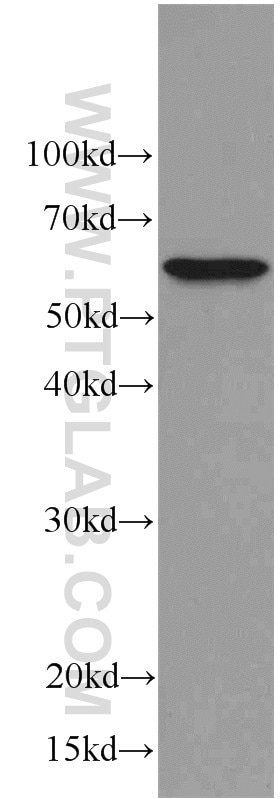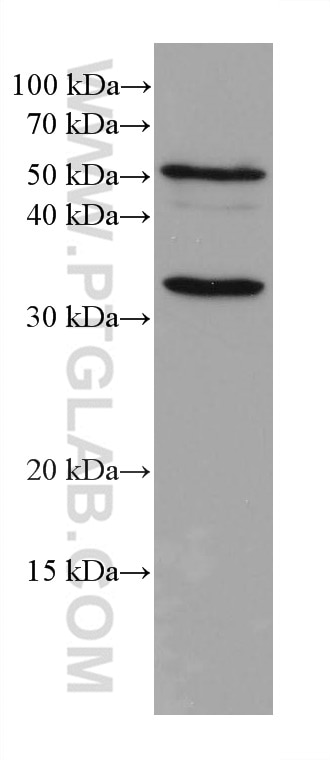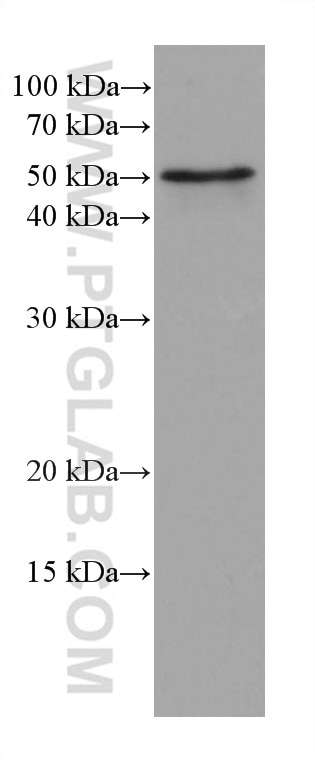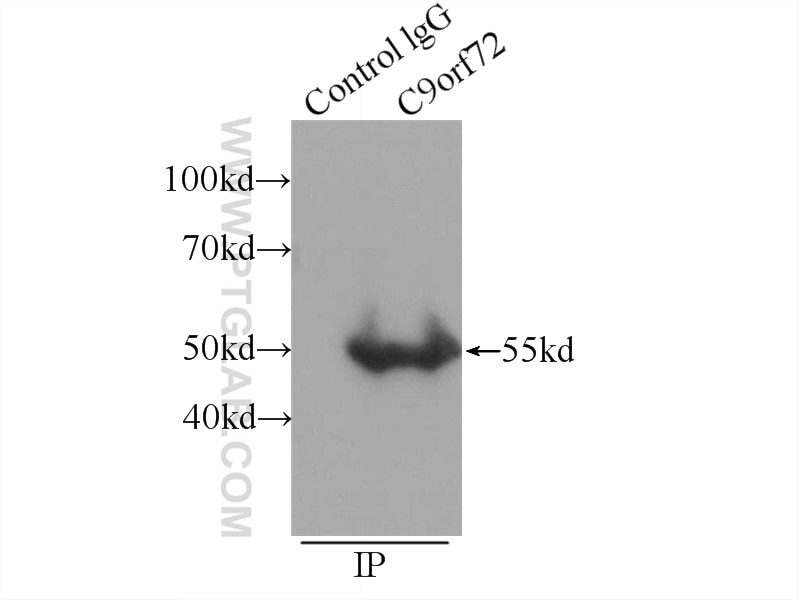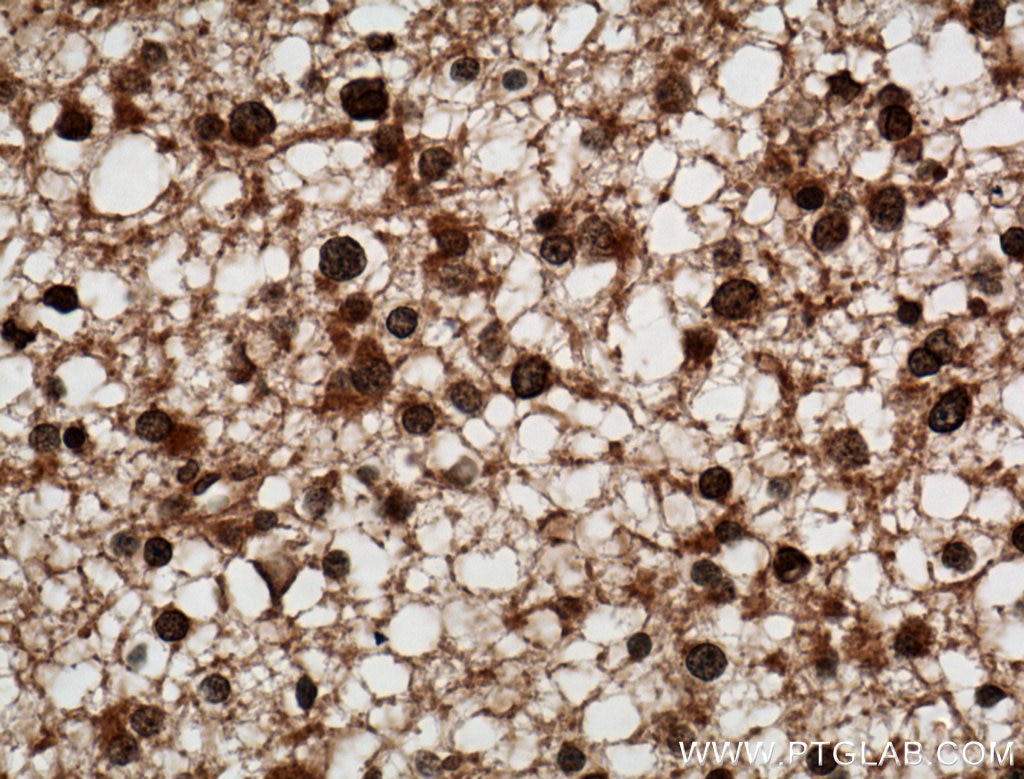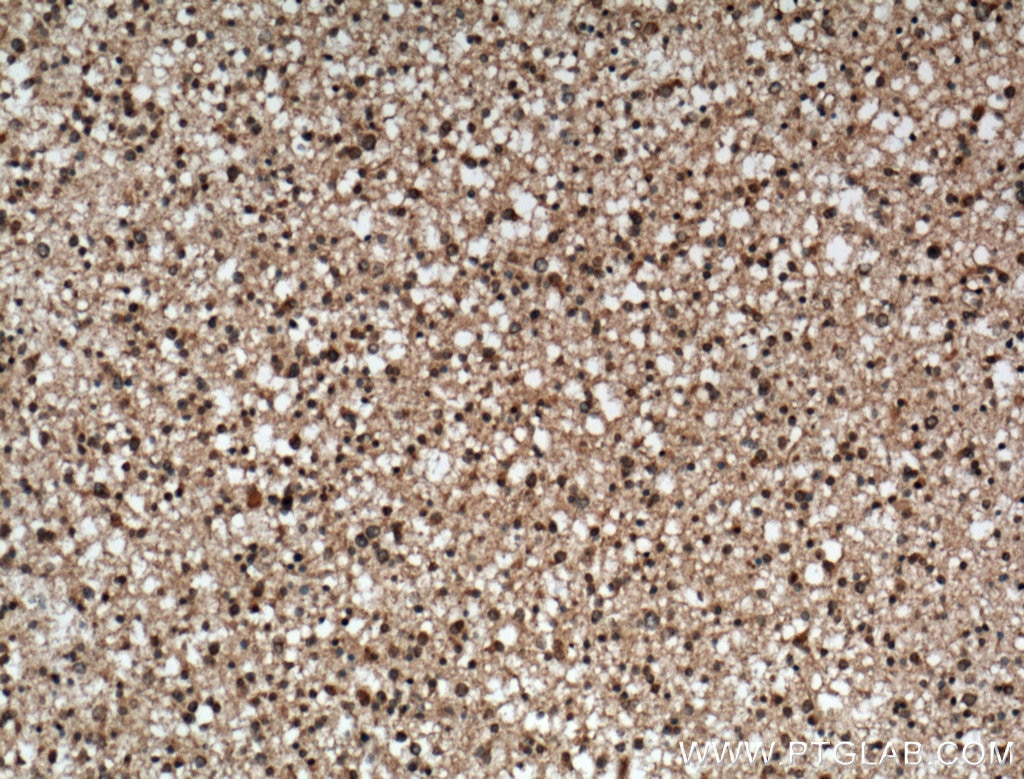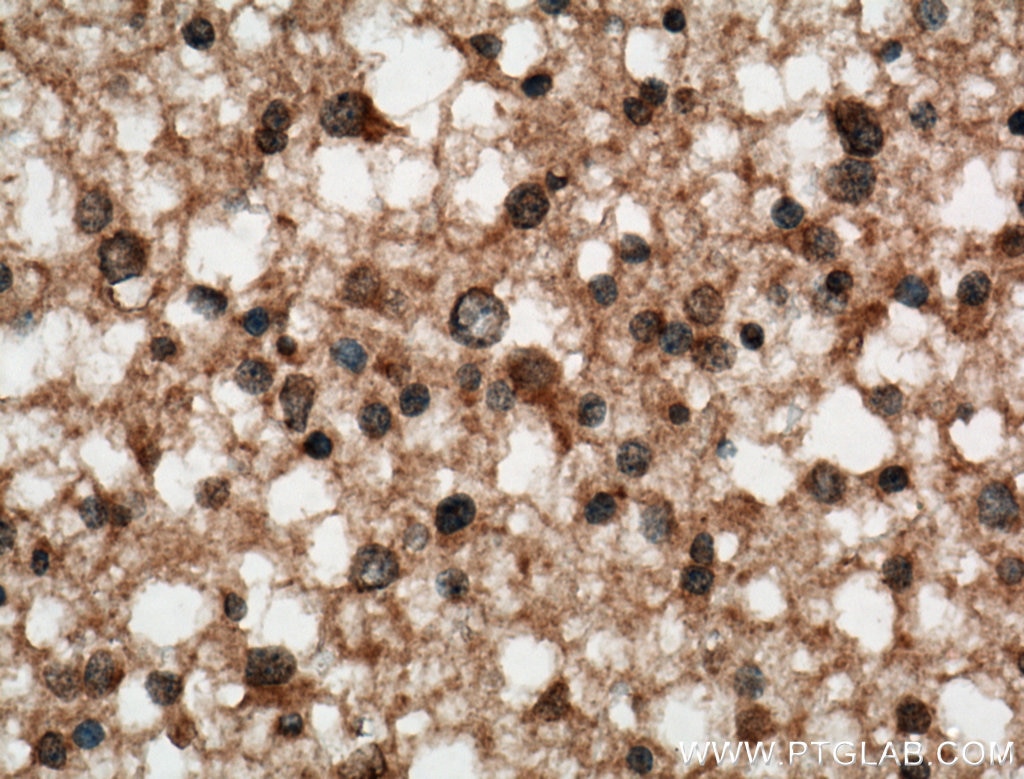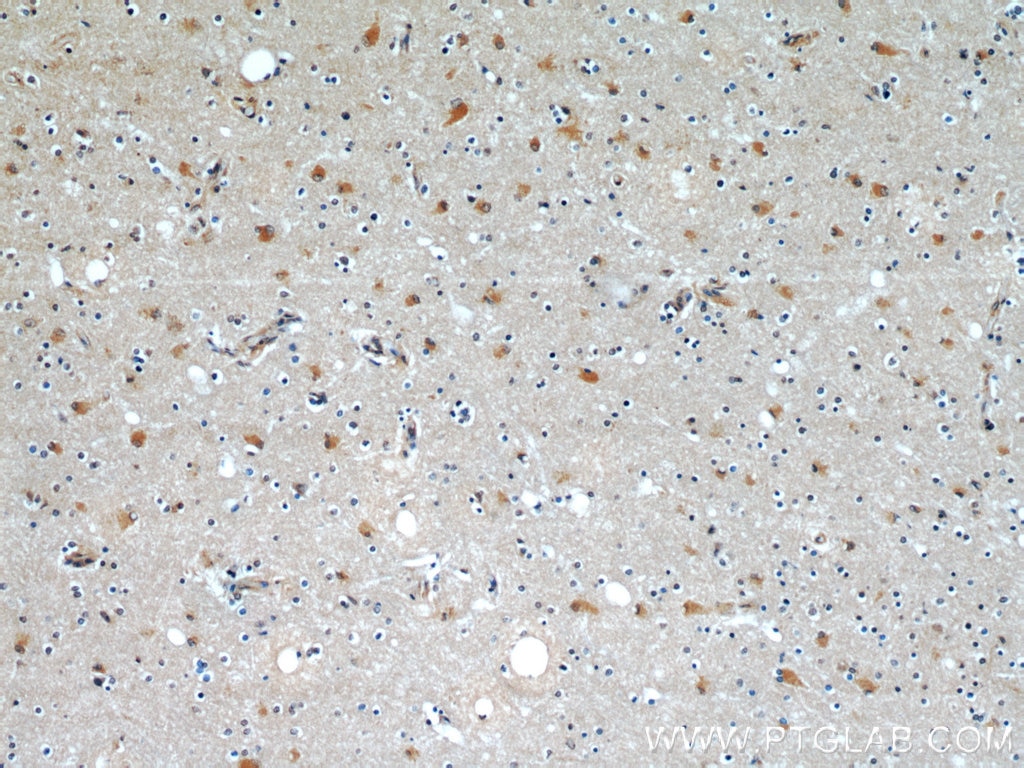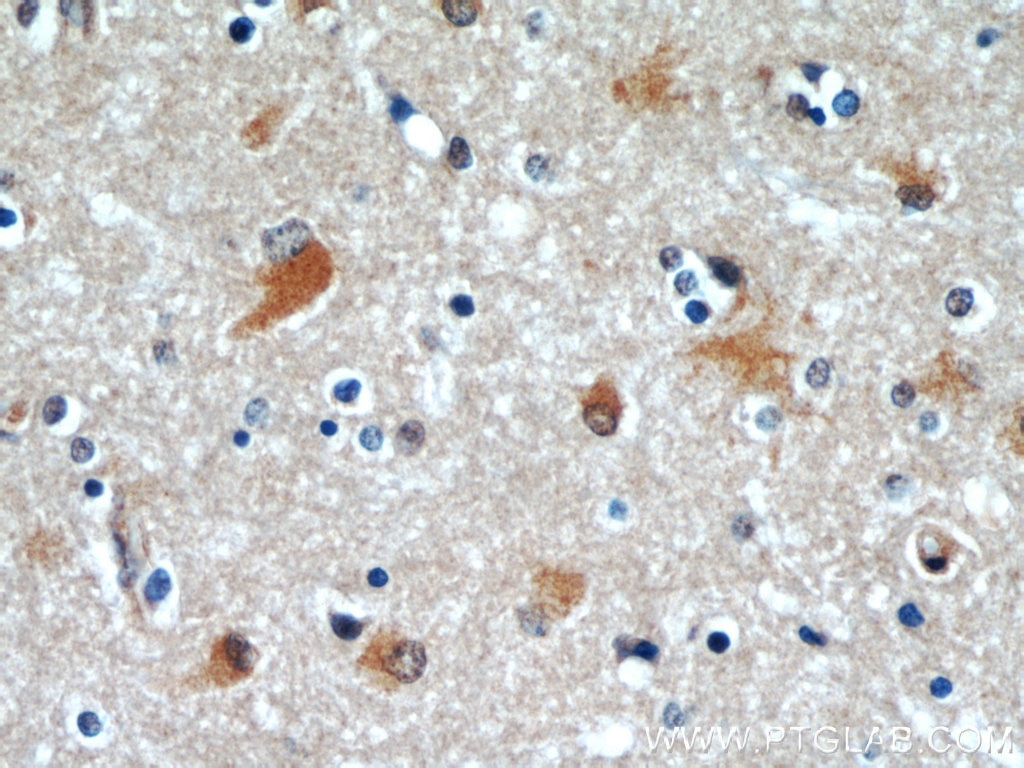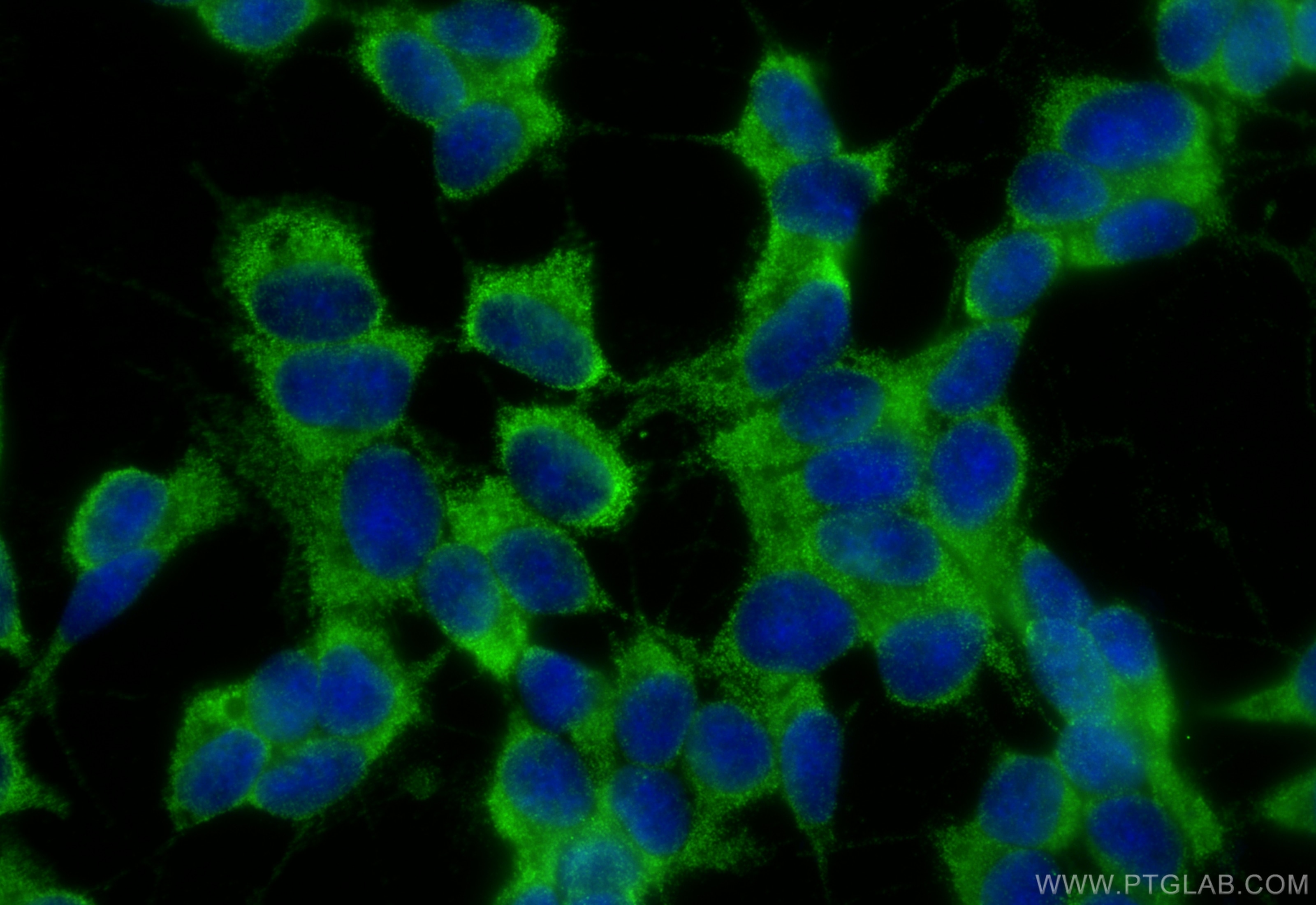Validation Data Gallery
Tested Applications
| Positive WB detected in | human brain tissue, C6 cells, Neuro-2a cells |
| Positive IP detected in | C6 cells |
| Positive IHC detected in | human gliomas tissue, human brain tissue Note: suggested antigen retrieval with TE buffer pH 9.0; (*) Alternatively, antigen retrieval may be performed with citrate buffer pH 6.0 |
| Positive IF/ICC detected in | SH-SY5Y cells |
Recommended dilution
| Application | Dilution |
|---|---|
| Western Blot (WB) | WB : 1:500-1:1000 |
| Immunoprecipitation (IP) | IP : 0.5-4.0 ug for 1.0-3.0 mg of total protein lysate |
| Immunohistochemistry (IHC) | IHC : 1:500-1:2000 |
| Immunofluorescence (IF)/ICC | IF/ICC : 1:200-1:800 |
| It is recommended that this reagent should be titrated in each testing system to obtain optimal results. | |
| Sample-dependent, Check data in validation data gallery. | |
Published Applications
| WB | See 4 publications below |
| IHC | See 2 publications below |
| IF | See 1 publications below |
Product Information
66140-1-Ig targets C9orf72 in WB, IHC, IF/ICC, IP, ELISA applications and shows reactivity with human, mouse, rat samples.
| Tested Reactivity | human, mouse, rat |
| Cited Reactivity | human, mouse, rat |
| Host / Isotype | Mouse / IgG2a |
| Class | Monoclonal |
| Type | Antibody |
| Immunogen |
CatNo: Ag21080 Product name: Recombinant human C9orf72 protein Source: e coli.-derived, PET30a Tag: 6*His Domain: 1-169 aa of BC020851 Sequence: MSTLCPPPSPAVAKTEIALSGKSPLLAATFAYWDNILGPRVRHIWAPKTEQVLLSDGEITFLANHTLNGEILRNAESGAIDVKFFVLSEKGVIIVSLIFDGNWNGDRSTYGLSIILPQTELSFYLPLHRVCVDRLTHIIRKGRIWMHKERQENVQKIILEGTERMEDQG 相同性解析による交差性が予測される生物種 |
| Full Name | chromosome 9 open reading frame 72 |
| Calculated molecular weight | 481 aa, 54 kDa |
| Observed molecular weight | 55 kDa |
| GenBank accession number | BC020851 |
| Gene Symbol | C9orf72 |
| Gene ID (NCBI) | 203228 |
| RRID | AB_2784547 |
| Conjugate | Unconjugated |
| Form | |
| Form | Liquid |
| Purification Method | Protein A purification |
| UNIPROT ID | Q96LT7 |
| Storage Buffer | PBS with 0.02% sodium azide and 50% glycerol{{ptg:BufferTemp}}7.3 |
| Storage Conditions | Store at -20°C. Stable for one year after shipment. Aliquoting is unnecessary for -20oC storage. |
Background Information
C9ORF72 has a domain whith polymorphic hexanucleotide repeat (GGGGCC). The C9ORF72-hexanucleotide repeat expansions have been recently identified as genetic markers in amyotrophic lateral sclerosis (ALS) and frontotemporal lobar degeneration (FTLD). FTLD-TDP has five subtypes: Sporadic FTLD, GRN mutation FTLD, TARDBP mutation FTLD, VCP mutation FTLD and C9ORF72 mutation FTLD. The C9ORF72 repeat expansions may indicate a worse prognosis in ALS. Human C9ORF72 has some isoforms with MW 54-60 kDa and 25-30 kDa. Mouse C9orf72 has some isoforms with MW 50-60 kDa and 35 kDa.
Protocols
| Product Specific Protocols | |
|---|---|
| IF protocol for C9orf72 antibody 66140-1-Ig | Download protocol |
| IHC protocol for C9orf72 antibody 66140-1-Ig | Download protocol |
| IP protocol for C9orf72 antibody 66140-1-Ig | Download protocol |
| WB protocol for C9orf72 antibody 66140-1-Ig | Download protocol |
| Standard Protocols | |
|---|---|
| Click here to view our Standard Protocols |
Publications
| Species | Application | Title |
|---|---|---|
Acta Neuropathol Commun Novel antibodies reveal presynaptic localization of C9orf72 protein and reduced protein levels in C9orf72 mutation carriers. | ||
Sci Rep Dual-gRNA approach with limited off-target effect corrects C9ORF72 repeat expansion in vivo. | ||
Amyotroph Lateral Scler Frontotemporal Degener Immunohistochemical detection of C9orf72 protein in frontotemporal lobar degeneration and motor neurone disease: patterns of immunostaining and an evaluation of commercial antibodies. | ||
Acta Neuropathol Sense-encoded poly-GR dipeptide repeat proteins correlate to neurodegeneration and uniquely co-localize with TDP-43 in dendrites of repeat-expanded C9orf72 amyotrophic lateral sclerosis. | ||
Animal Model Exp Med Knock in of a hexanucleotide repeat expansion in the C9orf72 gene induces ALS in rats. | ||

